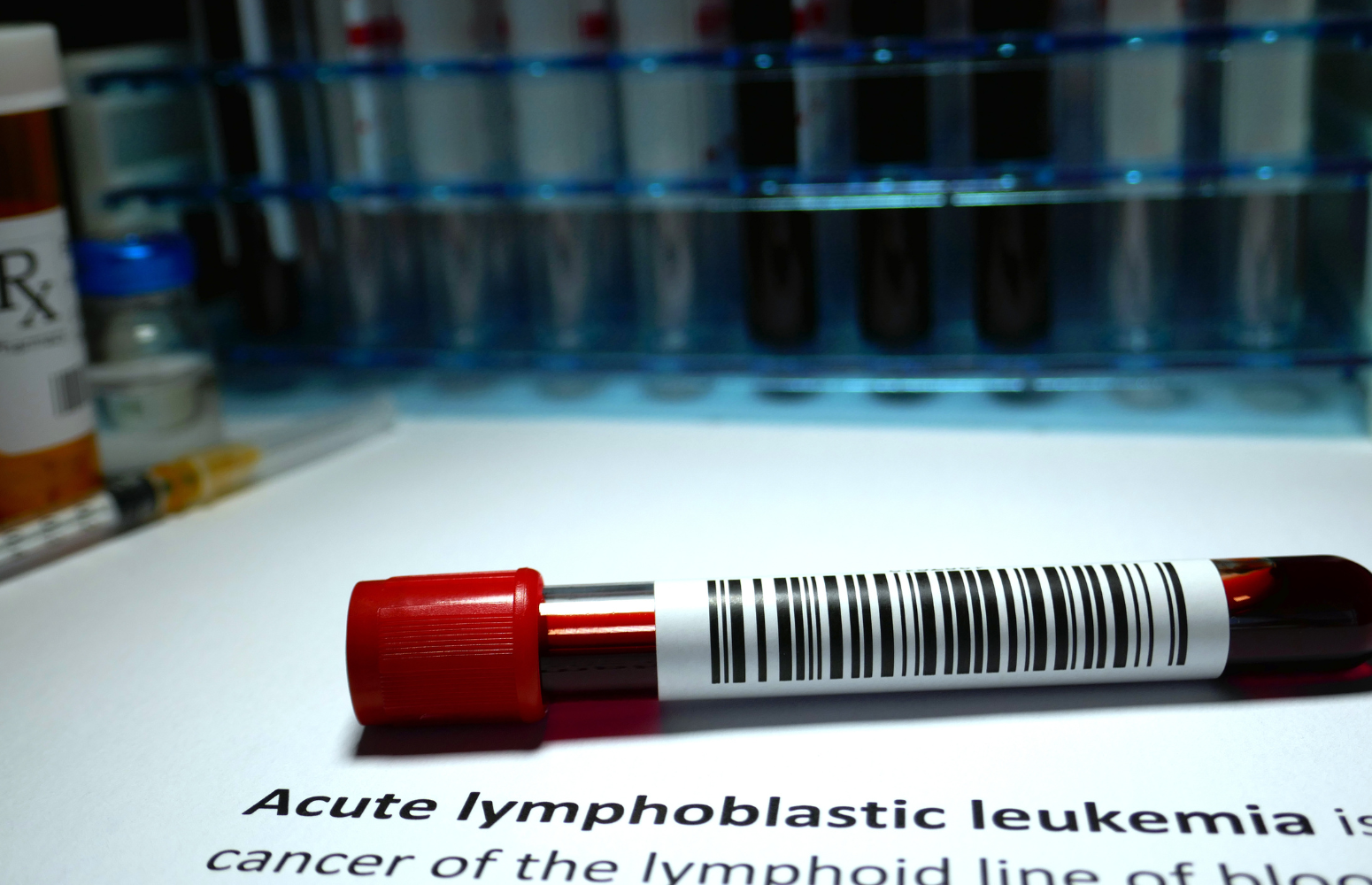Acute Lymphoblastic Leukemia (ALL): A Comprehensive Guide for Patients and Caregivers

Acute Lymphoblastic Leukemia (ALL): A Comprehensive Guide for Patients and Caregivers: Symptoms, Causes, and Early Warning Signs
Introduction: Understanding ALL
Acute Lymphoblastic Leukaemia (ALL), also called acute lymphocytic leukaemia, is a rapidly progressing cancer of the blood and bone marrow. It affects the lymphoid lineage of white blood cells, particularly immature lymphoblasts. These abnormal cells multiply uncontrollably, crowding out normal blood cells and impairing immune function. ALL primarily occurs in children but also affects adults, with varying treatment responses and outcomes between age groups.
Prevalence and Global Burden
According to the GLOBOCAN 2022 estimates:
- Worldwide incidence: ~64,000 new ALL cases annually
- Children: ALL is the most common paediatric cancer, accounting for about 75–80% of all childhood leukaemia cases, with peak incidence between ages 2 and 5.
- Adults: Less common but more aggressive, representing ~20% of adult leukaemia cases, with poorer prognosis compared to paediatric ALL.
In India, ALL contributes significantly to childhood cancer burden. The ICMR-NCDIR data shows an annual incidence of 4–5 cases per 100,000 children, with improving survival rates in urban centres due to better access to specialized care.
How Does ALL Develop?
ALL begins in the bone marrow, where early lymphoid progenitor cells (typically B or T cell lineage) undergo genetic mutations, disrupting normal differentiation and triggering uncontrolled proliferation. As these immature lymphoblasts multiply, they spill into the bloodstream and infiltrate organs like the liver, spleen, and central nervous system (CNS), causing systemic symptoms and complications.
Causes and Risk Factors
The exact cause is often unknown, but multiple factors can contribute:
- Genetic predisposition: Down syndrome, Li-Fraumeni syndrome, and other hereditary syndromes
- Prenatal chromosomal changes: Like TEL-AML1 fusion
- Radiation or chemical exposure: High-dose radiation or previous chemotherapy
- Infections and immune system factors: Delayed infections during childhood might alter immune regulation
- Family history: Siblings with ALL carry a slightly increased risk
Genomic Landscape of ALL
ALL is a genomically diverse disease, and molecular subtyping is critical for personalized treatment. Key genetic abnormalities include:
🔹 B-Cell ALL Genomics
- Hyperdiploidy: >50 chromosomes in cells; good prognosis in children
- ETV6-RUNX1 fusion: Favourable outcome
- Ph-positive (BCR-ABL1): Common in adults; poor prognosis unless treated with tyrosine kinase inhibitors (TKIs)
- Ph-like ALL: BCR-ABL1-like gene expression with kinase-activating lesions; high-risk
🔹 T-Cell ALL Genomics
- NOTCH1 mutations: Common, often targetable
TAL1, LMO1/2 alterations
Early T-precursor (ETP) ALL: Aggressive subtype with high relapse risk - Comprehensive genomic profiling (e.g., using next-generation sequencing, FISH, PCR) guides risk stratification and targeted therapy selection.
Symptoms of ALL
Symptoms are often non-specific and may mimic common infections:
- Fatigue, pallor (due to anaemia)
- Fever, frequent infections (due to neutropenia)
- Easy bruising, bleeding (from low platelets)
- Bone or joint pain
- Swollen lymph nodes, liver, or spleen
- CNS symptoms (in advanced cases): headache, vomiting, visual changes
Diagnosis
Accurate diagnosis involves:
- Complete blood count (CBC): Shows blasts, anaemia, and low platelets
- Peripheral smear and bone marrow aspiration/biopsy: Confirm diagnosis and estimate blast percentage
- Immunophenotyping (flow cytometry): Classifies B vs T cell ALL
- Cytogenetics and molecular tests: Identify high-risk genetic features
- Lumbar puncture: Checks for CNS involvement
Treatment Approaches
Treatment for ALL is intensive and often spans 2–3 years, especially in children.
- Chemotherapy
- Induction phase: Eliminates most leukemic cells (first 4–6 weeks)
- Consolidation: Prevents regrowth using high-dose chemo
- Maintenance: Low-intensity therapy over 1–2 years
- Drugs include vincristine, corticosteroids, L-asparaginase, anthracyclines, methotrexate, cytarabine
Targeted Therapy - Imatinib, Dasatinib: For BCR-ABL1 (Ph-positive) ALL
- Ruxolitinib: In Ph-like ALL with JAK mutations
- Venetoclax: Investigated in relapsed cases
- NOTCH1 pathway inhibitors: In T-cell ALL (clinical trials)
- Immunotherapy
- Blinatumomab: BiTE antibody that links CD3 (T-cells) and CD19 (B-cells)
- Inotuzumab ozogamicin: Anti-CD22 antibody-drug conjugate
- CAR T-cell therapy (e.g., tisagenlecleucel): For relapsed/refractory B-cell
- ALL in children and young adults
- Stem Cell Transplant (HSCT)
Recommended for high-risk patients or those who relapse. Best outcomes when done in first remission with a matched donor.
Recent Advances
- Minimal Residual Disease (MRD) monitoring using flow cytometry or PCR helps detect low levels of leukaemia post-treatment
Genomics-guided therapy: Enables better risk-adapted treatment
Shorter, more effective chemo protocols: Especially in paediatric ALL
New trials: Combining targeted therapy with standard chemo for improved outcomes - Prevention and Lifestyle During & After Treatment
- Though ALL can’t be fully prevented, minimizing risk factors (e.g., radiation exposure, healthy pregnancy) is beneficial.
During treatment:
- Eat a neutropenic-safe diet: well-cooked food, avoid raw meats
- Hydrate well and manage nausea, mucositis, and constipation
- Maintain good oral hygiene
- Prevent infections: regular handwashing, avoid crowds
- Vaccinations may be paused temporarily
- Gentle exercise and physical therapy to reduce fatigue
After treatment:
- Annual follow-ups with bone marrow and MRD tests
- Monitor for late effects: cardiac toxicity, infertility, secondary cancers
- Balanced diet rich in protein, iron, and antioxidants
- Emotional recovery and school/work reintegration support
Psychological and Emotional Impact
Living with or caring for someone with ALL can be emotionally taxing. Children especially need a strong support system to cope with:
Fear of relapse
- Isolation during long hospital stays
- Anxiety around chemotherapy and side effects
- Academic or social setbacks
Support options include:
- Paediatric psycho-oncologists
- Family counselling and caregiver support groups
- Art/music/play therapy
- Survivorship programs
Conclusion: Hope with Healing
At Healius Cancer and Haematology Clinics, under the expert guidance of Dr. Mangesh Kamath and his team, we emphasize personalized, evidence-based care for ALL patients—tailoring treatment to each patient’s genetic profile, age, and risk status. With significant advancements in therapy, especially for children, survival rates have dramatically improved, and the future of ALL treatment continues to get brighter.
Remember: Early diagnosis, genomic testing, adherence to treatment, and emotional support are the cornerstones of overcoming ALL.
